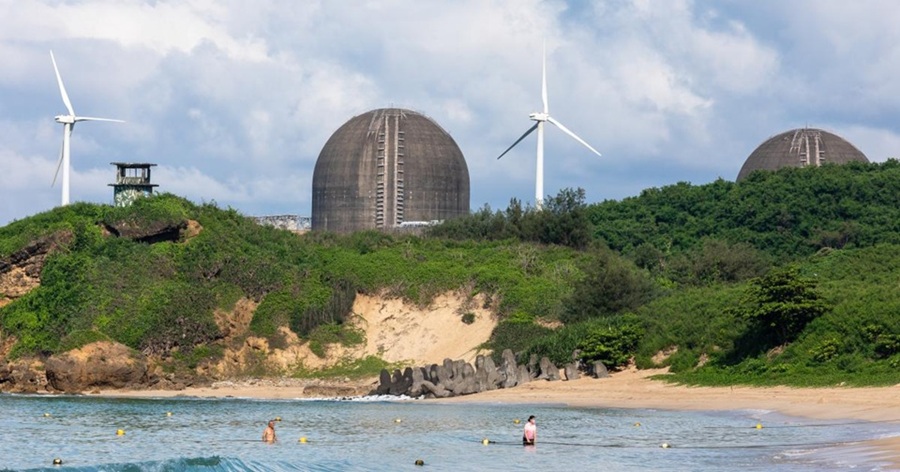In an era where energy security and climate change are front and center, Taiwan’s push to abandon nuclear power may seem counterintuitive — even reckless. With regional tensions simmering and energy costs on the rise, the island’s controversial move to shutter its remaining nuclear plants has sparked fierce domestic debate and international scrutiny. As of May 2025, Taiwan stands at a critical crossroads: phasing out nuclear power while facing an increasingly unstable security environment.
🏝️ Taiwan’s Nuclear Power Journey: A Brief Overview
Taiwan’s flirtation with nuclear energy dates back to the 1970s, when the oil shocks and rising energy demands led to the development of nuclear facilities. By the early 2000s, three operational nuclear plants supplied around 20% of the island’s electricity, providing a stable, low-carbon source of power.
However, the 2011 Fukushima disaster in Japan triggered a seismic shift in public sentiment. Anti-nuclear activism surged, and the Democratic Progressive Party (DPP), which favors renewables and environmental protection, pledged to eliminate nuclear energy by 2025.
That pledge became policy under President Tsai Ing-wen, with the goal of transforming Taiwan into a nuclear-free homeland. In 2017, the government passed legislation to phase out all nuclear power by the end of 2025, replacing it with natural gas and renewables.
⚠️ The 2025 Milestone: What's Happening Now?
As of May 2025, Taiwan is on the cusp of decommissioning its final nuclear facility — the Maanshan Nuclear Power Plant in southern Pingtung County. Originally scheduled for closure by the end of the year, one of its two reactors has already begun the shutdown process. By Q4 2025, both are expected to go offline permanently.
This makes Taiwan one of the few advanced economies actively removing nuclear power from its energy portfolio, even as countries like Japan, South Korea, France, and the UK are reconsidering or revitalizing nuclear projects in light of net-zero goals.
🔋 Energy Transition: What’s Replacing Nuclear?
The government's roadmap involves replacing nuclear energy with:
- Natural Gas (LNG): Targeting over 50% of electricity generation by 2025. This includes new LNG terminals and combined-cycle plants.
- Coal: Still around 30%, although scheduled for reduction.
- Renewables: Especially solar and offshore wind, projected to hit 20% of the energy mix.
While the push for renewables is commendable, critics argue Taiwan’s energy transition is over-reliant on imported LNG, raising concerns about supply stability — especially during geopolitical conflicts.
🛡️ Security Risks and Strategic Vulnerability
Taiwan’s decision comes at a time of heightened security risk in the Taiwan Strait. With Beijing escalating military activity, Taiwan’s grid is more vulnerable than ever. Nuclear plants, unlike gas imports or solar panels, can operate independently of international shipping routes — a critical feature in wartime scenarios.
Experts warn that eliminating nuclear energy increases Taiwan’s dependence on maritime supply chains, especially LNG shipments that could be blocked or disrupted in a conflict. According to defense analysts, Taiwan’s energy infrastructure — including LNG terminals and underwater cables — is a soft target in the event of a blockade.
🧑⚖️ Political and Public Sentiment
Despite the risks, public support for the nuclear phase-out remains relatively strong — particularly among DPP supporters and environmental groups. The 2018 referendum that attempted to overturn the phase-out policy was defeated, reinforcing the government’s mandate.
However, opposition voices — notably from the Kuomintang (KMT) party — argue that abandoning nuclear energy is short-sighted and politically driven. They have called for the extension of plant lifespans and even the restart of decommissioned reactors, such as the Fourth Nuclear Power Plant, which was never fully operational.
As of May 2025, the presidential administration under President Lai Ching-te (Tsai’s successor) is doubling down on the nuclear exit, betting that clean energy innovation and grid modernization will outweigh the risks.
🌏 Global Context: The Irony of Going Nuclear-Free
Taiwan’s nuclear exit stands in stark contrast to global trends. Many countries — even those previously skeptical — are embracing nuclear energy again:
- Japan has restarted several reactors under stricter safety guidelines.
- France plans to build new-generation EPR reactors to maintain energy independence.
- The UK is expanding small modular reactor (SMR) technology.
- South Korea reversed its nuclear rollback under a conservative government.
This divergence raises a critical question: Can Taiwan afford to go it alone in abandoning a proven, low-carbon energy source — especially with its security hanging in the balance?
🔮 What’s Next for Taiwan?
Looking ahead, Taiwan faces major challenges:
- Grid Resilience: A nuclear-free grid must withstand typhoons, cyberattacks, and potential war.
- Energy Imports: Taiwan imports over 97% of its energy. Diversification and storage are urgent priorities.
- Net-Zero Goals: Nuclear power is carbon-free — its removal could make emission targets harder to hit.
- Public Trust: Any large-scale blackout or energy price spike could spark backlash against the nuclear phase-out.
🧠 Final Thoughts
Taiwan’s nuclear exit is a bold political experiment — one rooted in environmental values but shadowed by geostrategic consequences. While the island seeks to lead with renewables and innovation, it’s also placing its energy security on a fragile tightrope in one of the world’s most volatile regions.
The question isn’t just whether Taiwan can survive without nuclear power — it’s whether it can thrive in a world where energy is as much a weapon as a resource.
